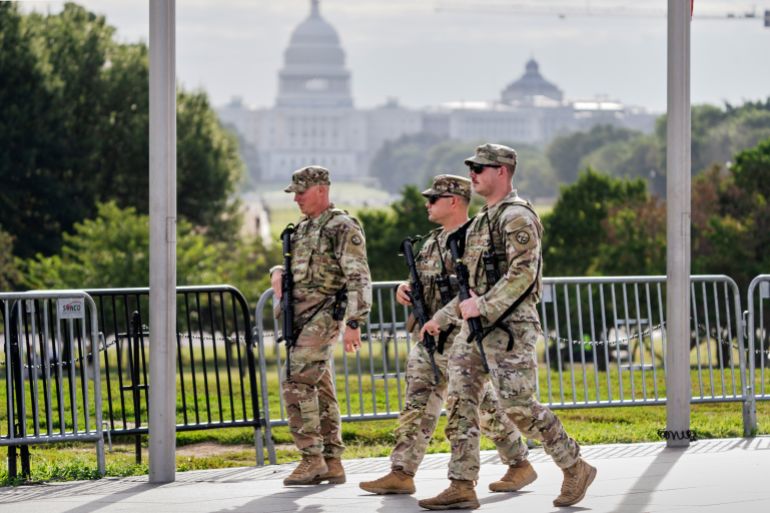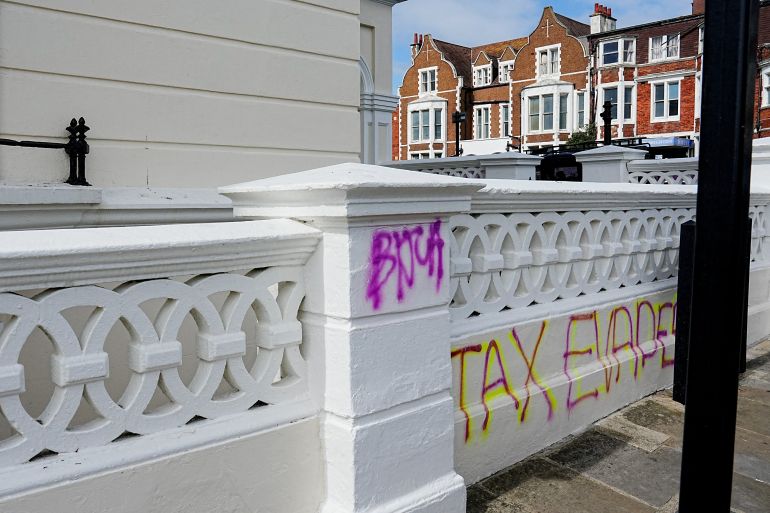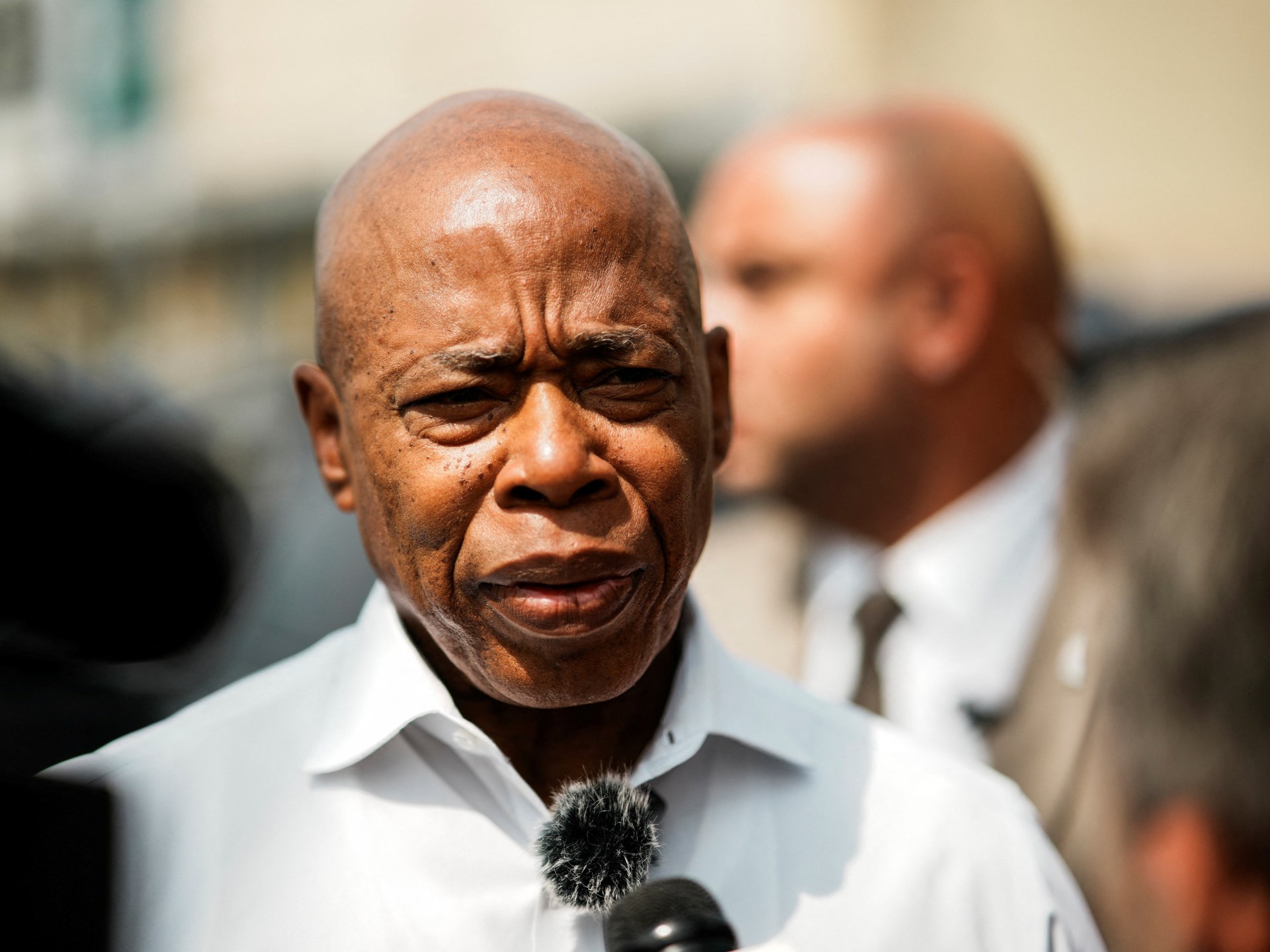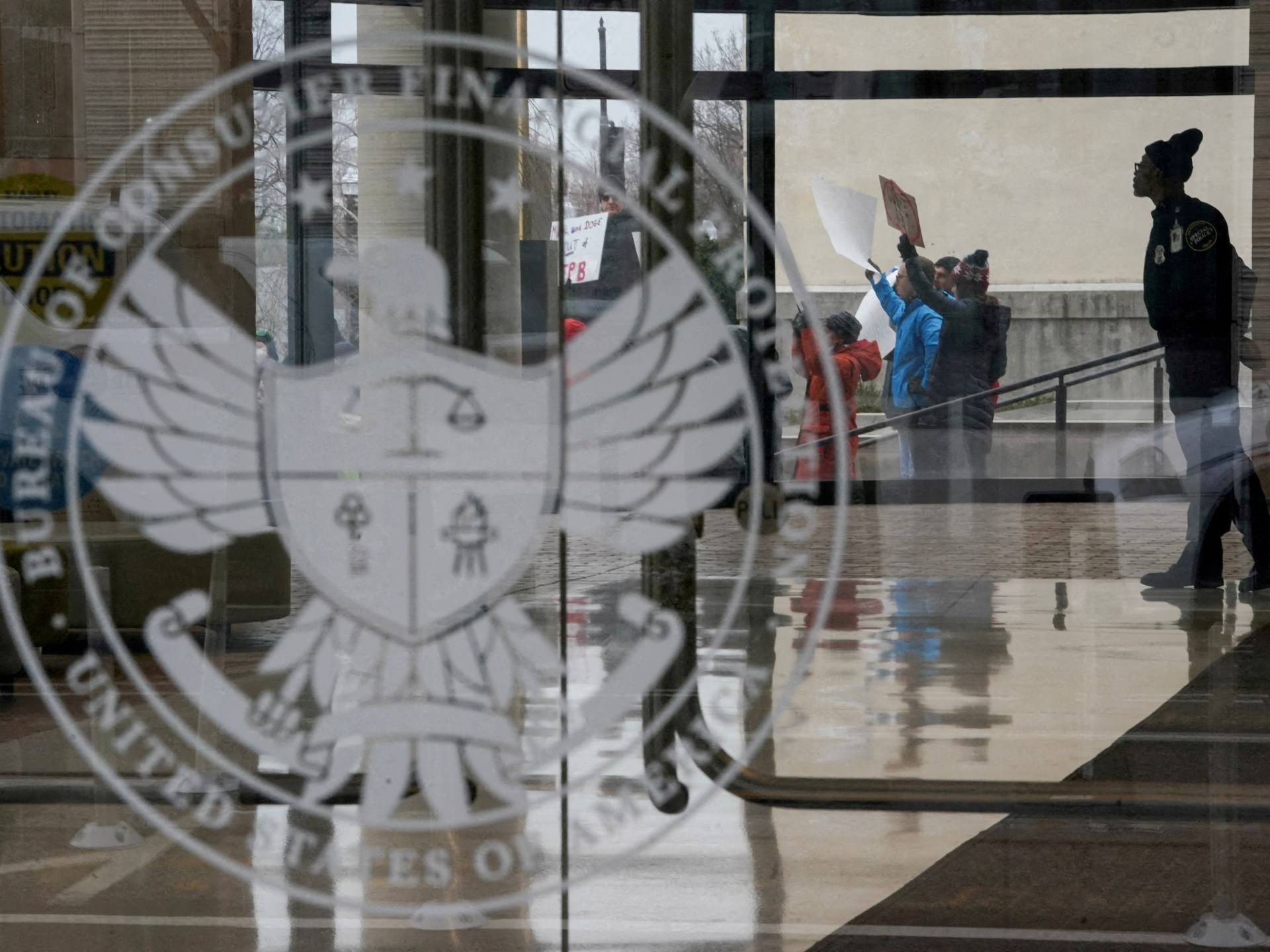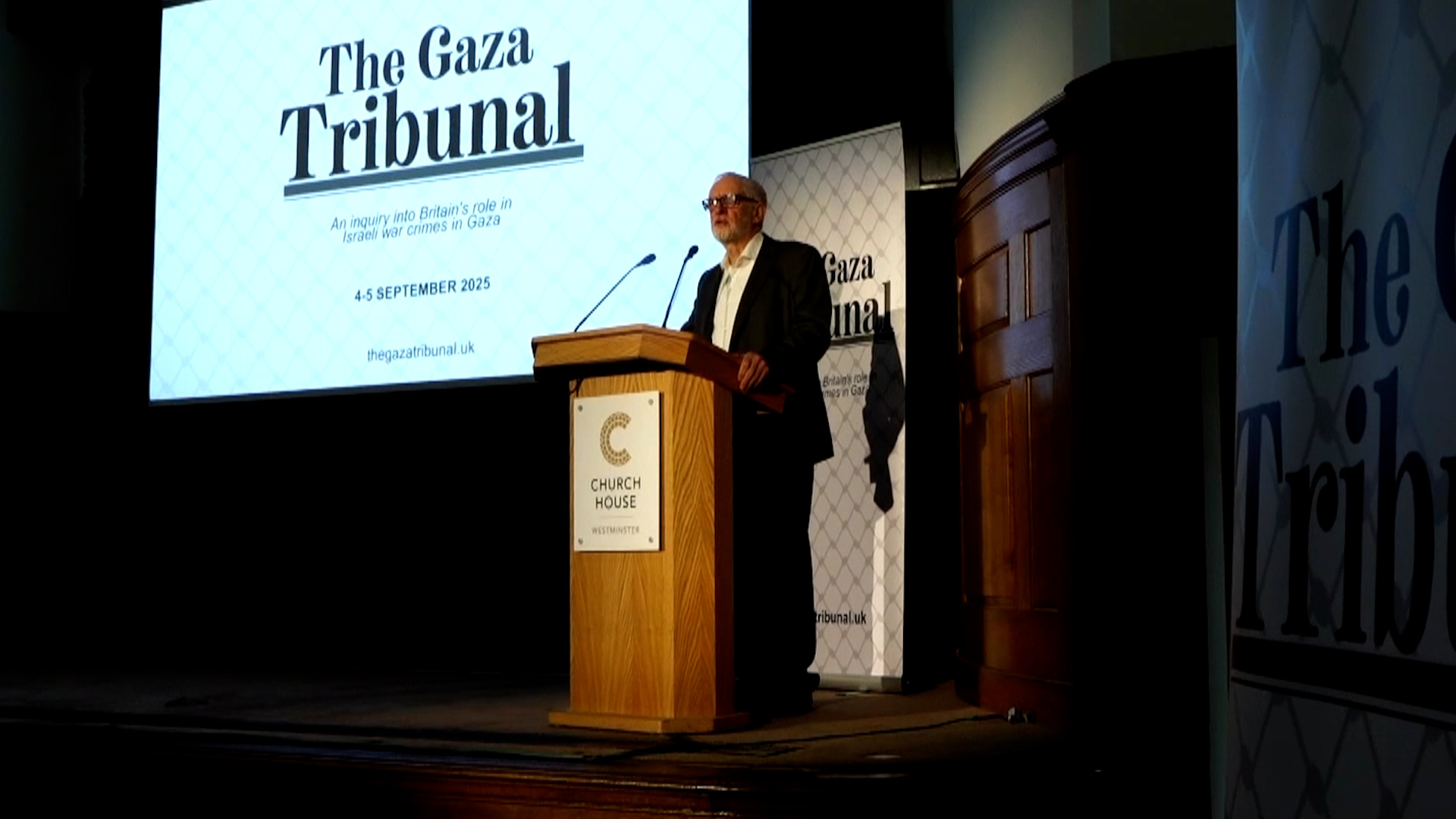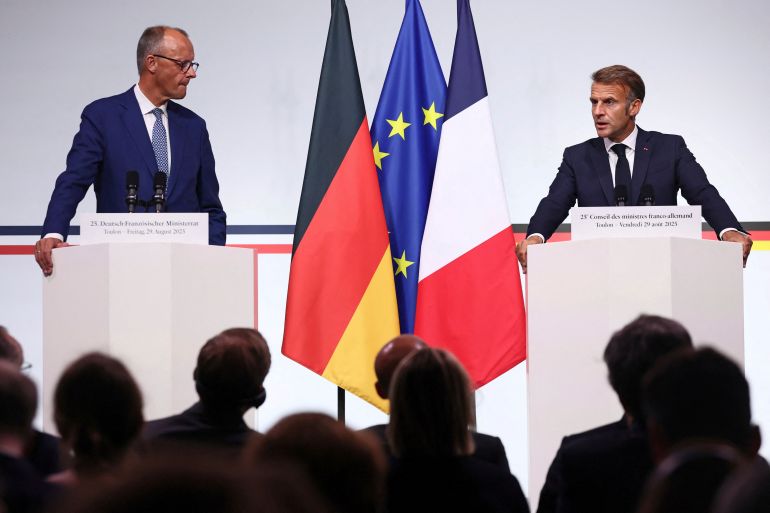Officials in the US city of Chicago were bracing for a possible deployment of the United States National Guard on Friday, as part of President Donald Trump’s wider crackdown on crime and immigration – notably, many point out, in Democratic strongholds.
Last week, CNN, citing unnamed officials, reported that the controversial military deployment could take place by Friday and that the National Guard might be ready to patrol the city on Saturday.
Recommended Stories
list of 4 itemsend of list
At the same time, a major federal immigration operation involving officials from Immigration and Customs Enforcement (ICE) is also expected to begin in the city.
Last Sunday, Illinois Governor JB Pritzker, a Democrat, claimed the Trump administration had not informed him of the deployment plans, and that such a move would amount to an “invasion” of the state.
On Saturday last week, Chicago’s Mayor Brandon Johnson signed an executive order directing Chicago police not to collaborate with National Guard troops or federal agents. The order also urged federal agents to wear body cameras and reveal their faces rather than wear masks, as they have done during previous, “military-style” immigration raids under Trump.
Trump deployed the National Guard in Los Angeles in June, and in Washington, DC, in August, purportedly to fight surging crime rates, but residents and state officials have complained that such moves are undemocratic and say that over-policing will erase trust between local police and communities.
What is the National Guard?
The National Guard is a state-based reserve force totalling 430,040 soldiers and airmen who are serving part-time, rather than full-time. It includes the Army National Guard and the Air National Guard units. National Guard members often hold a civilian job in addition to their military duties.
Each US state and entity has its own National Guard unit, and all together make up the US National Guard. The Guard can be activated for federal missions, such as under Trump’s recent directives, meaning it is dually-controlled by states and the federal government.
The National Guard’s origins go back to colonial-era militias that formed during British rule, with the first colony-wide militia forming in Massachusetts in 1636. Those militias later evolved into an organised, national structure following US independence.
What happened in Los Angeles?
In June, Trump deployed nearly 4,000 National Guard troops and 700 US Marines to Los Angeles to quell public protests against ICE raids. California Governor Gavin Newsom described the move as “political theatre”.
A court ruled on Tuesday that the deployment was illegal. It was the first time since 1965 that a president had federalised National Guard troops to address unrest in a state without a governor’s permission. President Lyndon B Johnson, at the time, sent troops to Selma, Alabama, to protect civil rights protesters from violence.
What happened in Washington, DC?
On August 12, Trump announced at a White House press conference that he was temporarily taking control of Washington, DC’s Metropolitan Police Department under Section 740 of the rarely invoked District of Columbia Home Rule Act, which allows federal control of police during an emergency.
Government officials said the DC force would be in place till November, according to a report on Thursday from ABC News.
Trump additionally deployed 800 National Guard troops to the city to “rescue” it from what he said was a crime and homelessness surge.
“I’m announcing a historic action to rescue our nation’s capital from crime, bloodshed, bedlam and squalor and worse,” Trump said in his announcement. “This is Liberation Day in DC, and we’re going to take our capital back.”
Trump has also said that his administration will seek the death penalty for murder cases in the city.
Washington, DC, is classified as a unique federal district and is a Democratic stronghold. As US president, Trump has direct control over the District of Columbia National Guard and can use the DC police force for 48 hours, or up to 30 days if he notifies Congress. However, Congress has not been formally notified of the recent moves.
DC Mayor Muriel Bowser initially criticised the deployment, describing it as “unsettling and unprecedented” on August 11. She added that although violent crime had spiked in the city in 2023, recent data shows crime rates have been falling and that violent crime is at a 30-year low.
Bowser has since tried to cooperate with federal agents by setting up an operations centre to coordinate communications between federal agencies and local law enforcement. The centre was established under Bowser’s “Safe and Beautiful Emergency Operations Center” (SBEOC), which is a play on Trump’s lingo.
One of the centre’s tasks is to ensure federal agents maintain policing practices that instil confidence in residents, such as not wearing masks, identifying their agencies and providing identification when interacting with people.
Despite that, on August 27, Bowser told reporters that there was a “break in trust” between communities and the police due to the presence of federal agents who wore masks and were not always identifiable. Bowser said she was “devastated” because some residents in the city said they were living in fear.

Why does Trump say it is necessary to deploy troops to cities?
Trump has argued that it is essential to combat crime in Los Angeles, DC and other cities. Despite widespread criticism and legal challenges, he has defended his decision, saying some troublemakers have to be handled by soldiers.
“Frankly, they were born to be criminals,” Trump said on Wednesday, when he confirmed the Chicago deployment would happen but did not give dates. “And they’re tough and mean, and they’ll cut your throat, and they won’t even think about it the next day. They won’t even remember that they did it. And we’re not going to have those people.”
The president has also pointed to what he says are the positive results from the DC federal takeover. Speaking at a conference on Tuesday, Trump said the city was now safe and that restaurants were enjoying booming businesses.
“We have no crime,” Trump said. “You’re not going to be shot.”
Republican lawmakers have backed Trump’s actions, especially in DC, where some are proposing a “Make Our Streets Safe Again Act” to target crime and address homelessness.
“President Trump’s unyielding leadership and strength, coupled with proper congressional oversight, ensures that Washington, DC, will reclaim its rightful place,” US Representative Harriet Hageman, a Republican, said at a news conference on Tuesday.
Where else has Trump threatened to deploy the National Guard?
Trump and officials from his administration have floated possible plans to deploy the National Guard in Democratic-led cities including Chicago, Baltimore, Boston and New York.
On Tuesday, Trump stated at a conference that he has “an obligation to protect this country, and that includes Baltimore”.
On August 22, he told reporters in the Oval Office that “Chicago is a mess”, and that his administration “will help with New York”.
The day before, ICE’s acting director said agents would “flood” Boston to remove immigrants in the so-called “sanctuary city”, referring to municipalities that limit cooperation with federal law enforcement on immigration issues.
Officials in Baltimore and Chicago, meanwhile, insist that crime rates have fallen in their cities.
In July, Baltimore’s police department said there had been a significant drop in gun violence compared to last year. The city’s Mayor Brandon Scott also told reporters on Monday that by September 1, 2025, 91 homicides and 218 non-fatal shootings were recorded. He said it was the lowest yearly homicide rate in over 50 years.
Also on Monday, Chicago Mayor Brandon Johnson said at a conference that overall crime rates had fallen in the city by 21 percent. “We will not have our police officers, who are working hard every single day to drive down crime, deputise to do traffic stops and checkpoints for the president,” he said.
How bad is crime in Chicago?
With a population of 2.7 million, Chicago has long had a national reputation linked with high crime rates, particularly gun violence. Legal experts say that reputation has some basis, but that crime rates are not unconnected to the era of racial segregation.
In reality, however, crime rates in Chicago vary depending on the crime type, and generally mirror those in other major cities, according to analysis by CBS News, which cited data from the Chicago Police and the FBI.
Last year, the city had 18,327 reported cases of violent crime, which translates to 695 per 100,000 people. In comparison, Oakland had 1,925 cases per 100,000; Detroit, 1,781; Little Rock, 1,672; and Baltimore, 1,606. Houston, which has a smaller population of 2.3 million, recorded a total of 26,628 violent crimes or 1,148 crimes per 100,000.
According to data from the DC-based Council on Criminal Justice (CJC), Chicago did see a 369 percent [nearly fivefold] increase in violent crime, property and drug offences between 2019 and 2023, driven mainly by a surge in vehicle thefts that was recorded in several other large cities in the same period. Many US cities similarly recorded high crime rates during the COVID-19 pandemic.
More recently, the CCJ reported that overall crime in Chicago by June 2025 was down compared to 2024.
In a year-on-year analysis, the CCJ noted that violent crimes such as homicides had reduced by 33 percent compared to last year. Aggravated assaults fell by 16 percent, gun assaults by 27 percent, robberies by 35 percent, carjacking by 51 percent and domestic violence by 10 percent.
An exception to the downward trend was sexual assault cases, which only reduced by one percent between June 2024 and June 2025.
What do critics of Trump’s hardline approach say?
Trump’s deployment of troops in Los Angeles, Washington, DC, and the looming Chicago deployment have faced criticism and legal challenges from law experts, officials and residents. Some say it constitutes the formation of a “police state”, the sidelining of state authorities, and overreach. Others say it is over-policing that could have an adverse impact on relations between communities and local law enforcement.
“This is an active military takeover of the capital,” protesters who assembled outside Congress in DC on Thursday wrote in an open letter to lawmakers, which they handed out.
“It is a textbook indicator of backsliding democracy and intensifying authoritarianism … This might come off as alarmist, but in the last 100 years of history, the pattern is clear and we are witnessing it in real time,” the letter stated.
California Governor Gavin Newsom and the state’s Attorney General Rob Bonta have also argued that Trump’s decision to deploy federal military agents violates the Posse Comitatus Act, which restricts the use of the military for civilian law enforcement.
This week, US District Judge Charles Breyer ruled that the Los Angeles deployment was unprecedented, an overstep of presidential authority, and ultimately, illegal. The case had been filed in June by the state of California.
“There were indeed protests in Los Angeles, and some individuals engaged in violence,” Breyer wrote, referring to Trump’s insistence that the anti-immigration-raid protests constituted a “rebellion” that needed to be quashed.
“Yet there was no rebellion, nor was civilian law enforcement unable to respond to the protests and enforce the law,” Breyer wrote in his judgement.
